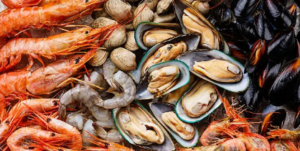Frozen seafood is a game-changer for weeknight dinners. It’s packed right after it’s caught, making it less expensive and easier to store.
Contrary to popular belief, there is no need to thaw frozen fish before cooking. Cooking straight from frozen is also safer, as it prevents overcooking. Here are some tips to get you started.
 How to find a supplier
How to find a supplier
Buying pre-cooked frozen seafood online is easier than ever, and a growing number of companies are offering pre-cooked frozen fish and other options. The best ones use new quick-freeze technologies and better packaging to maintain quality and reduce food waste. These companies also offer subscriptions and bulk orders to help customers save money.
Many people have misconceptions about frozen seafood. They believe that it is not as fresh as seafood that has been refrigerated, but this isn’t necessarily the case. In fact, some of the seafood labelled as “fresh” at a supermarket may have been frozen before arriving at the counter due to shipping and all the middlemen it has to go through. To find the best-frozen fish, look for a company that flash-freezes it while still on the boat or at sea so it stays fresh until you thaw it.
Another important factor is to buy from a company that provides transparent information on its seafood, including where it comes from and whether it’s farmed or wild. Some of these companies enlist third-party auditors to ensure their seafood matches what they claim on their labels.
To prepare frozen fish or shrimp, first rinse them to remove any surface ice and pat them dry. Then cook them as you would fresh seafood; increase the cooking time by about 50%. To avoid overcooking, check the seafood often and stop cooking it when it is cooked through and has a firm texture.
Ingredients
Seafood is an important part of a balanced diet and is rich in protein, omega-3 fatty acids, and vitamins and minerals. It can be cooked in a variety of ways, including steaming, boiling, and grilling. It is also available frozen, which makes it a convenient option for busy cooks. When choosing a frozen pre-cooked frozen seafood product, make sure to check the label for ingredients and preparation methods. Some products are marinated or brushed with oil to ensure they retain their moisture and tenderness while cooking. Depending on how you prepare the seafood, it is essential to avoid overcooking it, as this can cause it to become rubbery.
Frozen seafood is typically flash-frozen shortly after being harvested, which helps preserve its flavour and texture. It is widely available in grocery stores, making it easy to stock up for quick weeknight dinners or weekend grilling sessions. The key to success with frozen seafood is to cook it correctly. Frozen seafood can become tough and rubbery if it is overcooked, so it’s important to check it frequently and remove it from the heat as soon as it becomes opaque and firm.
Packaging
Frozen seafood can be an easy, convenient way to get healthy fish in your diet. But it’s important to shop wisely and understand how to prepare it properly so that you get a delicious, flavorful result. The frozen fish section of grocery stores tends to be well-stocked with a variety of choices, including fish fillets, shellfish, and crab meat. But there’s a big difference between high-quality, naturally raised seafood and less-than-healthy varieties that contain antibiotics or growth hormones.
Look for bright eyes, firm flesh, and red gills in whole fish or red bloodlines in fresh tuna fillets. The seafood should also have no foul odour and spring back when pressed. If the seafood is sold in its shell, check to make sure it’s closed; discard any that open easily. In addition, check that the seafood has no ice crystals and no signs of frost or ice on the outside of the package.
Some pre-cooked frozen seafood products may have time/temperature indicators on the packaging that show if they’ve been stored at the proper temperature. If these are present, always check them before purchasing. Also, avoid packages that are open or torn on the edges or have ice crystals on them; these could indicate the seafood has been thawed and refrozen. If you’re buying unpackaged seafood, be sure that it’s physically separated from raw seafood, either in its display case or divided by dividers.